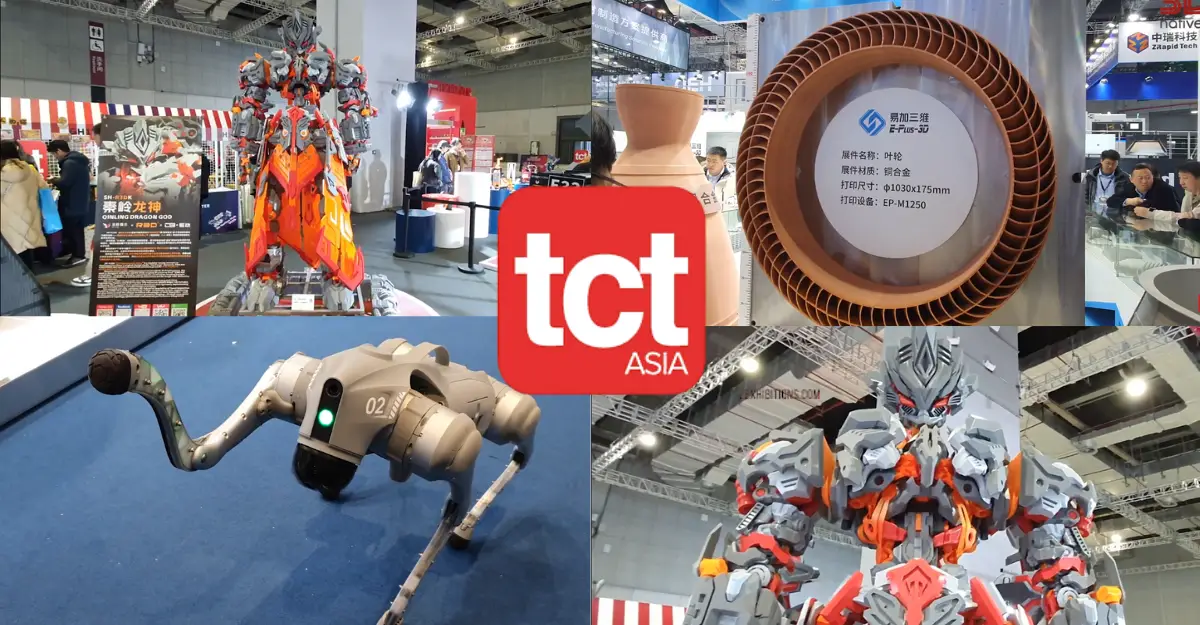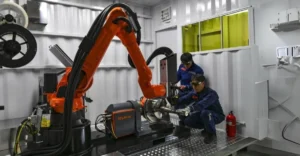TCT Asia 2025 spotlights transformative 3D printing applications across aerospace, robotics, and cultural arts.
The annual TCT Asia technology showcase concluded this week, revealing breakthrough 3D printing innovations that push the boundaries of aerospace, robotics and industrial manufacturing.
The BLT company unveiled a 3D printed hypersonic aircraft produced using aluminum alloy in 384 hours. The aircraft features an integrated engine configuration and lattice structural framework, demonstrating additive manufacturing’s growing role in aerospace development.
Anisoprint showcased its AnisoDog, a robotic canine with 3D printed composite parts. The robot’s legs were manufactured using PETG with Continuous Carbon Fiber, creating a bone-like internal structure. Each leg required approximately 12 hours to print, highlighting advances in composite materials for robotics applications.
CNPC Powder, a Canadian firm with Chinese facilities, displayed a metal 3D printed motorcycle constructed from Scalmalloy. Developed by Airbus Group’s APWORKS, a high-strength, corrosion-resistant aluminum alloy that looks promising for automotive and aerospace applications.
Among the most visually dramatic exhibits was the 3D printed Qinling Dragon God created by Chinese studio Starforge. This cultural art piece comprises over 1,000 components made from PETG and TPU materials using FDM technology, merging traditional artistry with modern manufacturing techniques.
Eplus3D showed an industrial impeller made from hard copper alloy. It took 186 hours to print the component but demonstrates progress in processing a difficult yet valuable additive manufacturing material due to its conductivity.
03 Feb 2025 by 3D Printing IndustryTCT Asia 2025 highlights wide ranging developments in 3D printing is moving fast and the launch of wide ranging technologies at TCT Asia 2025 demonstrate this fact.
































